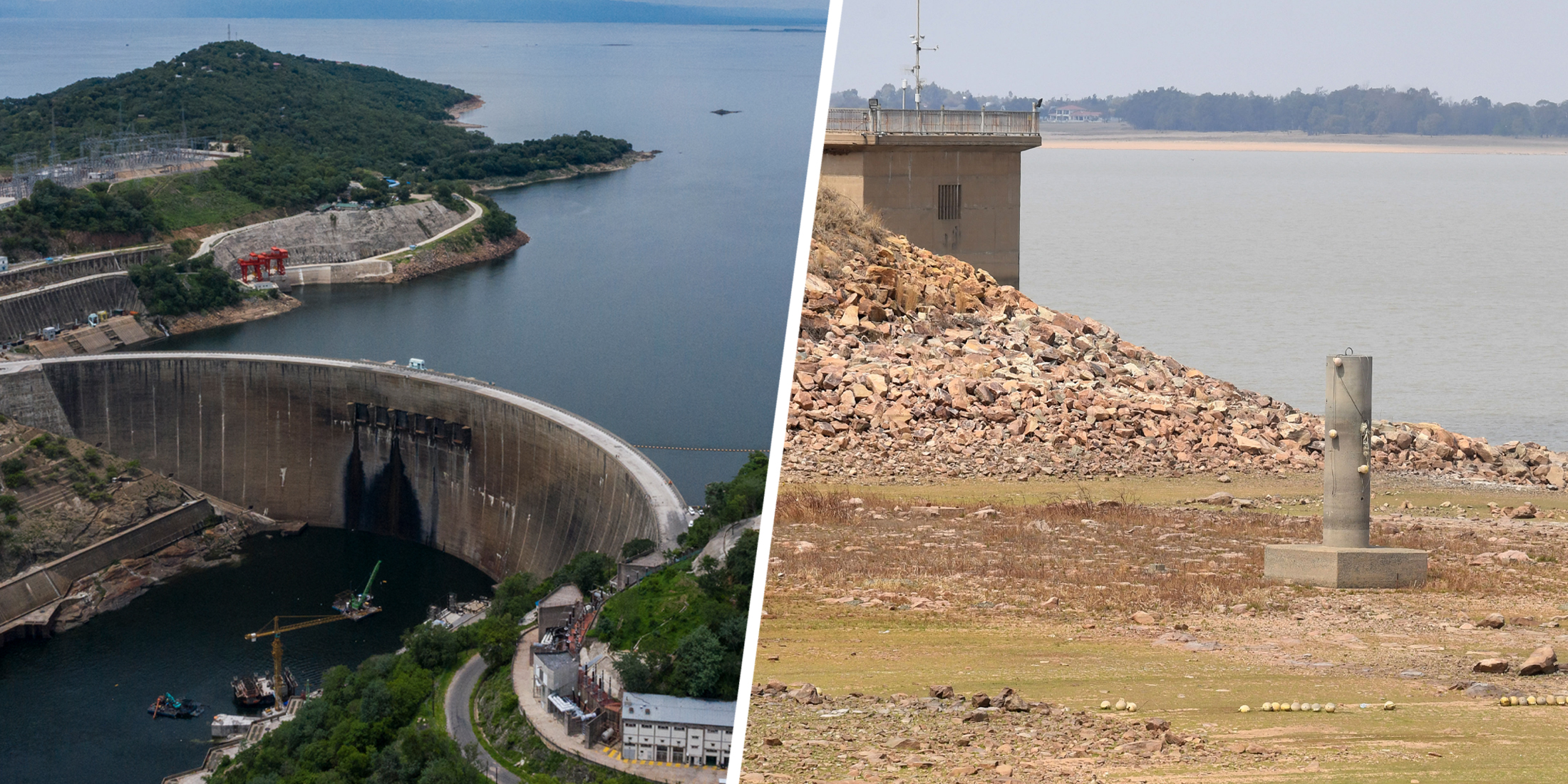Southern Africa is not just hungry in the wake of El Niño. It’s also dehydrating as dams evaporate and the promised rains of La Niña fail to materialise.
Oxford Economics Africa this week produced a sobering report on the region’s dam levels. The Kariba Dam, which straddles Zimbabwe and Zambia, has almost dried up. Its levels fell to 4.2% of usable capacity by 4 November 2024 compared with 17.3% this time last year.
The Vaal Dam — the H₂O lifeblood of Gauteng — is at only 34% capacity, compared with 75% a year ago. Aside from last summer’s searing El Niño, the six-month closure of the Lesotho Highlands Water Project tunnel for scheduled maintenance, which began 1 October, is also leaving the Vaal Dam high and dry.
Lesotho looks set to have a dark summer as half of its power generation comes from the Muela hydropower station, which is closed until April.
“In Namibia, irrigation water supply from the Hardap Dam on the Fish River was recently suspended on 1 November due to low water levels. The dam, currently at only 6.3% capacity, has reached its lowest level on record. This decision, essential to preserve water for household and livestock use, has left local farmers without irrigation, particularly affecting small-scale producers who now face uncertainty as they await rain,” the report reads.
A look at the weekly dam levels monitored by the Department of Water and Sanitation paints a less alarming — though still concerning — picture of the overall situation in South Africa, Eswatini and Lesotho.
In Eswatini, dams are 74.6% full compared with 98.8% this time last year, while Lesotho’s are 79% full compared with 87.3% last year. In South Africa, the dam levels among the provinces are lowest in North West, at 57.8%.
Overall, dam levels in South Africa and these two neighbouring states are 76.6% compared with 87.1% a year ago.
Of course, South Africa has other water challenges rooted in local government failure, with frequent outages in Johannesburg and other metros and several river systems fouled by the collapse of sewerage plants.
Deeply worrying
For the region as a whole, notably Zambia and Zimbabwe, the situation is deeply worrying for agriculture, power generation and the overall economy as the prospects of La Niña fade.
La Niña usually brings good rains to southern Africa and there were high hopes a few months back that a strong one would follow the last El Niño, which in its typical fashion blazed a trail of drought and despair in the region.
But after initial forecasts saw La Niña emerging as early as July, predictions for its arrival keep getting pushed back and its intensity scaled down.
If La Niña does materialise, it is now forecast to be weak and over by February or March.
Read more: The chances of La Niña forming are fading, Australian weather service says
The low dam levels and the La Niña delay coincide with growing hunger and food insecurity in southern Africa, which have reached historic levels in El Niño’s aftermath, according to the Famine Early Warning Systems Network and the UN’s World Food Programme.
Read more: Loaded for Bear – Hunger in southern Africa reaches historic levels in El Niño’s wake
More than 30 million people in the region are in need of food aid between now and the hopeful end of the “lean season” in March, when the harvesting of maize and other staples would typically begin.
The combination of falling dam levels and rising hunger bode ill for the region as summer sets in and La Niña remains missing in action. Climate change is exacerbating the situation as temperatures also rise.
Read more: Above-normal rainfall predicted for South Africa’s northeast: a summer shift in weather patterns
Dam levels can also be taken as a proxy for moisture levels in the soil, and another poor harvest in Zimbabwe, Zambia, Malawi and parts of Mozambique and Namibia could translate into a massive humanitarian disaster.
The bottom line is that southern Africa’s hopes of recovering from El Niño's wrath are evaporating. DM





